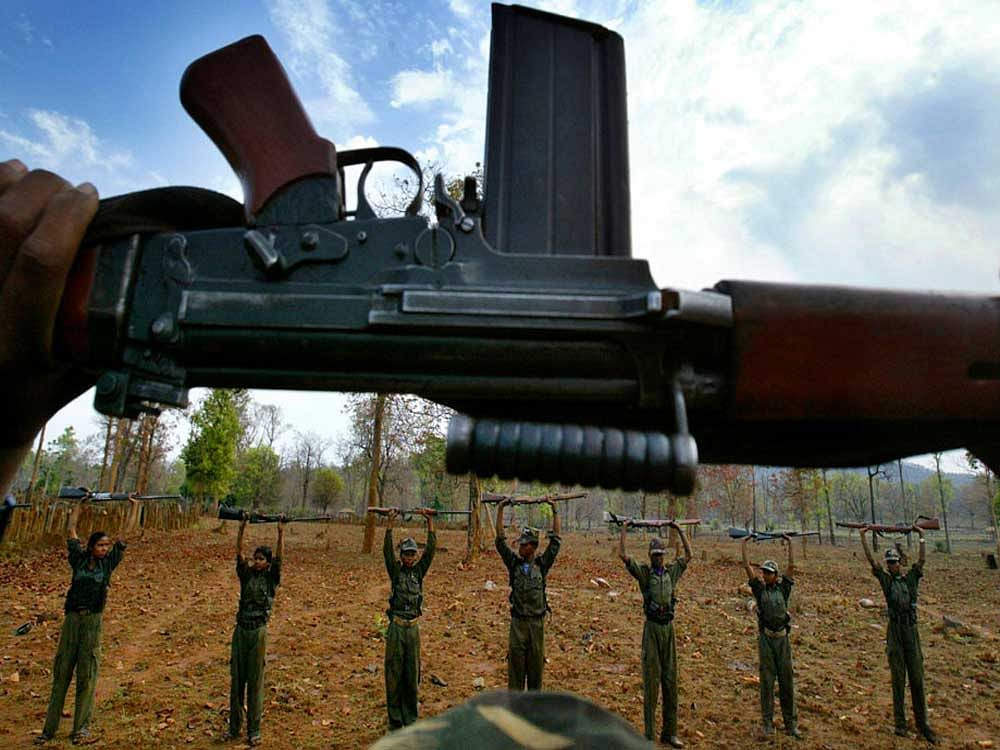In the December Assembly elections in Maoist-affected Chhattisgarh, the BJP lost to Congress after being in power for three consecutive terms. The polls witnessed sporadic violent attacks by Maoists, including one on Doordarshan media team and security forces. The Maoists clearly advocated boycott of elections. Why and how do they boycott polls? And, what is their take on democratic politics and political parties?
In support of poll boycott, Maoists in general invoke Lenin: “To decide once every few years which member of the ruling class is to repress and crush the people through parliament — this is the real essence of bourgeois parliamentarism, not only in parliamentary-constitutional monarchies, but also in most democratic republics.” Also, since the Maoists consider elections as a ‘safety valve’ to divert the masses from the path of struggle, they oppose the very electoral process. They consider the parliamentary system a hurdle to “People’s Revolution”. They believe that the question of poll boycott lies at the heart of “People’s War”.
Justifying thus, Maoists advised as well as threatened voters against exercising their franchise in Chhattisgarh. In some districts like Dantewada, Bijapur and Sukma, they even asked the people to vacate the area or not to come out of their houses till the polls were over. In the run-up to the elections, the Maoists put up posters underlining “price rise, spurt in corruption, unemployment” and such other issues as the reason for the masses to launch a protest and boycott the polling. They also made it difficult and risky for political parties to campaign.
Maoists perceive mainstream political parties in poor light. A key Maoist ideologue VaraVara Rao observed: “All the political parties, from Narendra Modi to Buddhadeb Bhattacharya, are united in their repression of the people” and “parliamentary history is a hurdle for revolution.” Another Maoist leader, Kishanji, said, “We are the opposition in the true sense. All the political parties are the same in all the states. We want to destroy the State. This is the real war.”
Maoists believe that there is immense ‘trust deficit’ between the mainstream political parties and the common man. And so, they project themselves as the best alternative to governance, to make India “a corruption-free country” where “individuals cannot amass capital and private property while simultaneously driving large sections of society into poverty.”
Although Naxalism started off with a good cause in the late 1960s, its nature has substantially altered over time. From an ideologically driven movement, it has transformed itself into a guerrilla force with its own militia, sophisticated arms, rudimentary weapons manufacturing capabilities, funding sources — internal and external — rigid organisational structure, fertile recruiting base, and ideal terrain to hide. This would not have been possible without the support of thousands of sympathisers who are drawn even from among civil society, especially in tribal-dominated states.
It should also be acknowledged that Naxalism or Left-Wing Extremism has been like a shifting pain that moved from West Bengal to Bihar and then to Andhra Pradesh. When there was pressure in AP, the Naxals found a suitable sanctuary in the central Indian areas comprising parts of Bihar, West Bengal, Jharkhand, Chhattisgarh, Orissa, Maharashtra and Karnataka. This constitutes the so-called “Red Corridor”, which they found conducive for insurgency and an ideal base to start “Revolutionary Zones”.
In these areas, what is common is the absence of activities of moderate political parties. In fact, it perfectly matches the theme of aggrieved social sections and the “Robin Hoods”. The Maoists, in this regard, have learnt how to operate through front organisations in each state which centre on local grievances, and has successfully involved some intellectuals and human rights activists on their side.
The principal aim of the Maoists is not the social or economic advancement of the Adivasis, but to capture power through armed struggle. It implies the use of bullets and not ballots. This is the singular character that distinguishes Maoist groups from mainstream political parties.
What should be done about it? As the erstwhile Planning Commission had pertinently observed, “Mobilising the support of the people is also absolutely essential to weaken the support base of the Naxals. The political parties are not playing their role in this regard. The representatives of major political parties have virtually abdicated their responsibility.” This is the crux of the problem.
Maoists need to be tackled through mainstream political activity. The movement of mainstream politicians among the tribal population will help wean them away from Maoist influence. It is important that the people, especially in Maoist-affected areas, have confidence in the mainstream political parties and the instruments of State — the executive, legislature and judiciary. What has been lacking is a strategy of mobilisation by mainstream political parties in these areas. They can begin by delivering effective governance when in power.
(The writer is Associate Professor, Department of International Studies and History, CHRIST (Deemed to be University), Bengaluru)
